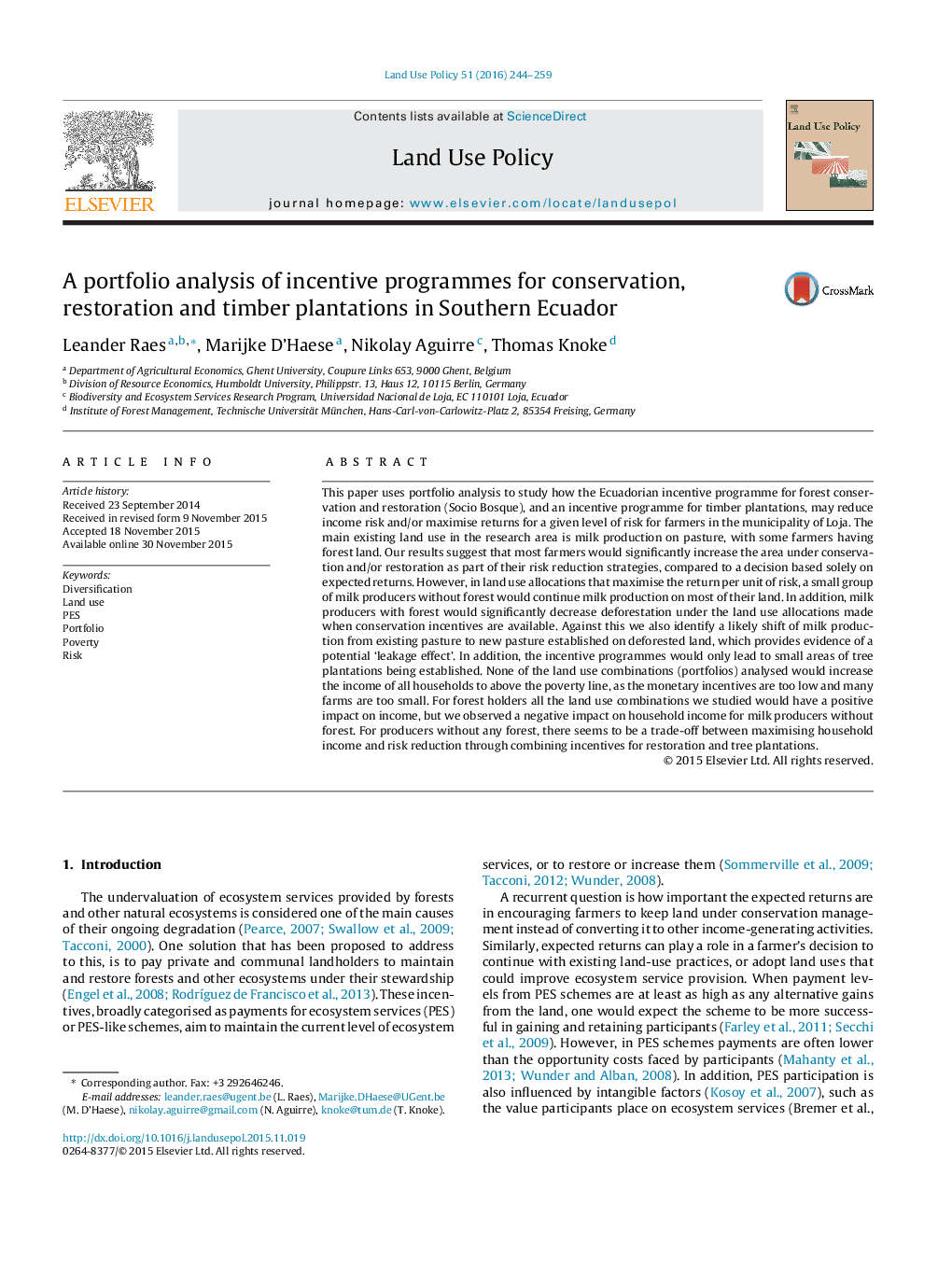| کد مقاله | کد نشریه | سال انتشار | مقاله انگلیسی | نسخه تمام متن |
|---|---|---|---|---|
| 92911 | 160101 | 2016 | 16 صفحه PDF | دانلود رایگان |
• Conservation and restoration incentives reduced variability in land income by 34%.
• Restoration incentives resulted in a 75% reduction in pasture.
• Incentives resulted in the conservation of 60% of forest area.
• Incentive programmes would only promote small areas of tree plantations.
• Adopting restoration had a negative impact on income for most farms without forest.
This paper uses portfolio analysis to study how the Ecuadorian incentive programme for forest conservation and restoration (Socio Bosque), and an incentive programme for timber plantations, may reduce income risk and/or maximise returns for a given level of risk for farmers in the municipality of Loja. The main existing land use in the research area is milk production on pasture, with some farmers having forest land. Our results suggest that most farmers would significantly increase the area under conservation and/or restoration as part of their risk reduction strategies, compared to a decision based solely on expected returns. However, in land use allocations that maximise the return per unit of risk, a small group of milk producers without forest would continue milk production on most of their land. In addition, milk producers with forest would significantly decrease deforestation under the land use allocations made when conservation incentives are available. Against this we also identify a likely shift of milk production from existing pasture to new pasture established on deforested land, which provides evidence of a potential ‘leakage effect’. In addition, the incentive programmes would only lead to small areas of tree plantations being established. None of the land use combinations (portfolios) analysed would increase the income of all households to above the poverty line, as the monetary incentives are too low and many farms are too small. For forest holders all the land use combinations we studied would have a positive impact on income, but we observed a negative impact on household income for milk producers without forest. For producers without any forest, there seems to be a trade-off between maximising household income and risk reduction through combining incentives for restoration and tree plantations.
Journal: Land Use Policy - Volume 51, February 2016, Pages 244–259
